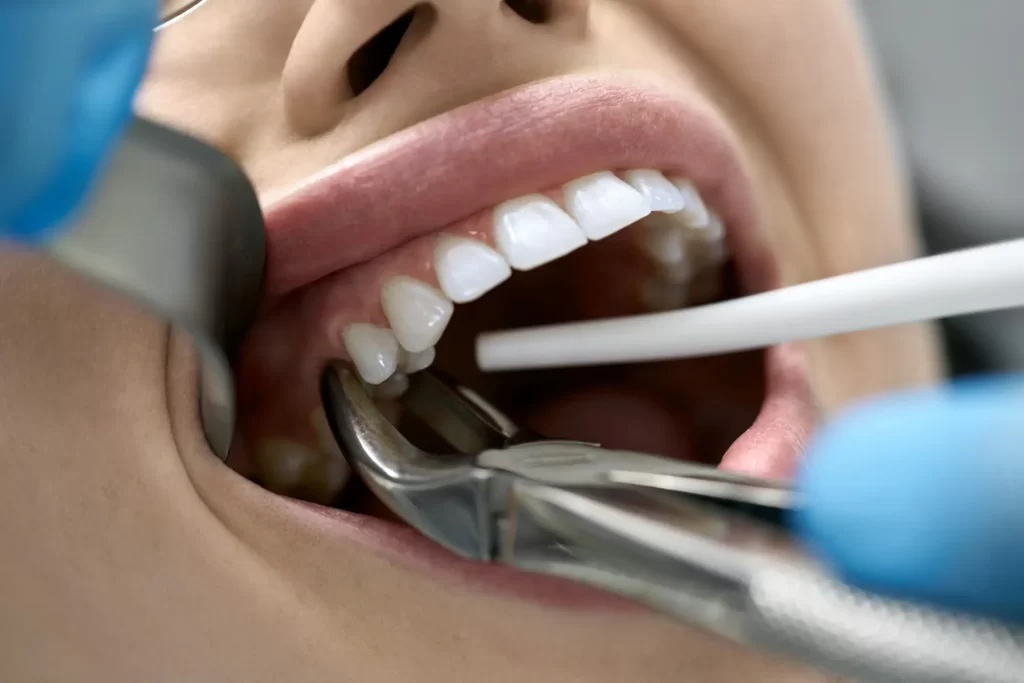
Can You Use a Straw After a Tooth Extraction? A Detailed Guide
Following a tooth extraction, proper care is crucial for a smooth and speedy recovery. One common question that arises is whether it’s safe to use a straw after the procedure. This article delves into the details of straw usage post-extraction, exploring the risks, recommended timelines, and alternative hydration methods.
Why Avoid Straws Initially?
The primary concern with using a straw soon after a tooth extraction is the potential disruption of the blood clot formation at the extraction site. This clot plays a vital role in the healing process, preventing bleeding and promoting tissue regeneration.
Suction created while using a straw can dislodge the clot, leading to a painful condition called dry socket. Dry socket exposes the underlying bone and nerve endings, causing intense pain, delayed healing, and increased risk of infection.
Recommended Timeframe
Generally, dentists recommend avoiding straws for at least the first week following a tooth extraction. This allows sufficient time for the blood clot to stabilize and the healing process to begin.
However, the exact timeframe may vary depending on several factors, including:
- Complexity of the extraction: Simple extractions with minimal disruption to surrounding tissues may allow for earlier straw use compared to complex wisdom teeth removal.
- Individual healing: Some individuals heal faster than others. Your dentist can assess your healing progress during follow-up appointments and advise on straw usage accordingly.
- Dentist’s specific instructions: Always prioritize your dentist’s specific post-operative instructions, as they tailor recommendations to your individual case.
Signs Indicating Safe Straw Usage
Here are some positive indicators that it might be safe to cautiously reintroduce straws after the initial healing period:
- Minimal swelling and discomfort: Reduced swelling and pain around the extraction site suggest good healing progress.
- No signs of bleeding: Absence of bleeding from the extraction site is a positive sign.
- Dentist’s approval: Consult your dentist during a follow-up appointment to confirm if using a straw is safe in your specific case.
Cautious Use and Alternatives
Even after the initial healing period, it’s advisable to use straws with caution:
- Gentle suction: Avoid creating strong suction while drinking. Opt for wider straws that require less effort.
- Limited use: Start with occasional use and gradually increase frequency as tolerated.
- Alternatives preferred: Whenever possible, prioritize sipping directly from a cup or using a spoon for liquids.
Here are some alternative hydration methods to consider during the initial healing phase:
- Sippy cups: These cups are designed for controlled liquid intake and minimize suction.
- Spoons: Gently spoon liquids into your mouth, avoiding the extraction site.
- Hydrating foods: Consume water-rich foods like soups, yogurt, and fruits to maintain hydration.
Additional Post-Operative Care Tips
For a smooth recovery after a tooth extraction, follow these additional tips:
- Maintain good oral hygiene: Gently brush and floss your teeth as instructed by your dentist, avoiding the extraction site.
- Pain management: Use pain medication as prescribed by your dentist.
- Diet: Stick to soft foods for the first few days and gradually transition to regular food as tolerated. Avoid hard, crunchy, or sticky foods that can irritate the extraction site.
- Rest: Get enough sleep to promote healing.
- Avoid smoking and alcohol: These substances can hinder healing and increase the risk of infection.
- Avoid strenuous activity: Avoid strenuous exercise or activities that could dislodge the blood clot.
FAQ
Q: What are the symptoms of dry socket?
A: Symptoms of dry socket include throbbing pain at the extraction site, radiating to the ear or jaw, a foul odor from the mouth, and visible bone in the extraction socket.
Q: What should I do if I suspect dry socket?
A: If you suspect dry socket, contact your dentist immediately for prompt treatment.
Q: How long does it take for a dry socket to heal?
A: With proper treatment, dry socket pain typically subsides within a few days. However, complete healing may take several weeks.
Q: Can I use a straw with cold drinks after a tooth extraction?
A: While cold temperatures can help reduce swelling, it’s still best to avoid straws initially due to the risk of dislodging the blood clot. Consult your dentist for specific guidance.
Q: Are there any special types of straws safer to use after extraction?
A: There’s no specific “safe” straw design. However, wider straws requiring less suction might be a better option if your dentist approves straw usage.
Remember: This information is intended for educational purposes only and should not be a substitute for professional dental advice.





More Stories
Amoxicillin Dosage For Tooth Infection How Many Days
Why Does My Throat Hurt When I Yawn
Why Do My Teeth Hurt When I Have A Cold